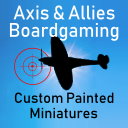I think that a declaration of the most underrated weapon has an implicit assumption that WWII was essentially static in terms of weaponry and tactics. This is most definitely not the case; both tactics and technology were constantly changing during the war such that I find it difficult to compare the value of individual weapons.
For example, lets take just fighter planes. At the beginning of the war, either the German BF-109 or British Spitfighter was the best fighter (depending on who you ask). However the BF-109 was replaced by the FW190 (generally considered superior to the BF109) and later by the incomparable ME262.
http://en.wikipedia.org/wiki/Focke_Wulf_Fw_190 :
When the Fw 190 started flying operationally over France in August 1941, it quickly proved itself to be superior in all but turn radius to the Royal Air Force’s main front-line fighter, the Spitfire Mk. V.[1] The 190 wrested air superiority away from the RAF until the introduction of the vastly improved Spitfire Mk. IX in July 1942 restored qualitative parity.[2] The Fw 190 made its air combat debut on the Eastern Front in November/December 1942; though Soviet pilots considered the Bf 109 the greater threat, the Fw 190 made a significant impact. The fighter and its pilots proved just as capable as the Bf 109 in aerial combat, and in the opinion of German pilots who flew both, provided increased firepower and manoeuvrability at low to medium altitude.
Which of these three fighters had the most impact? In 1939, obviously the BF109. In 1943, probably the FW190 (though there were still many BF109s being flown by Germany). In March 1945, obviously the ME262 because any other German fighter would be quickly shot out of the sky. In 1939 I would have to say the BF109 was essential for the Germans, but in 1945 the essential fighter was the ME262 (too bad for Germany they couldn’t make enough).
Tactics changed also. In 1939, the British were fighting over southern England so that they tried to lengthen and prolong any dogfights as a tactic knowing that the German BF109 would have to leave or risk running out of fuel. In 1945, allied fighters generally prefered to shoot at ME262 fighters when they were on the ground. They commonly followed (when they could) the ME262 planes back to their runway and then proceeded to strafe it when it landed.
http://en.wikipedia.org/wiki/Messerschmitt_Me_262 :
Allied pilots soon found the only reliable way of dealing with the jets, as with the even faster Me 163 Komet rocket fighters, was to attack them on the ground and during takeoff or landing. Luftwaffe airfields identified as jet bases were frequently bombed by medium bombers, and Allied fighters patrolled over the fields to attack jets trying to land.
That said, I really like the answer of “horse”.






